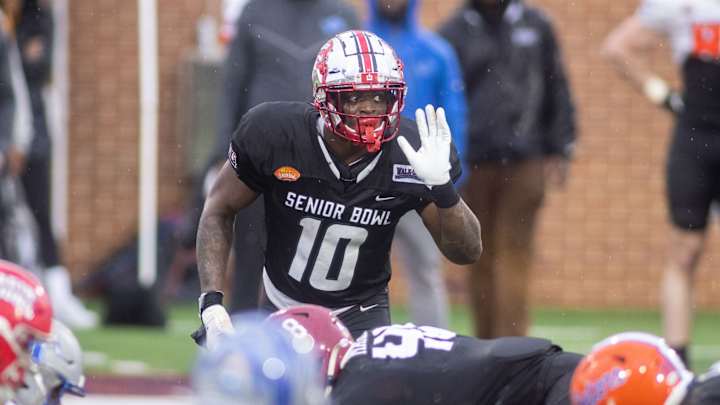'Local' Edge Prospect Catches Titans' Attention

In this story:
As the Tennessee Titans prepare for this month's 2022 NFL Draft, edge rusher does not jump out as a position of need.
They have invested a combined $170 million in their two starters over the past two offseasons, signing Bud Dupree to a five-year, $82.5 million contract in 2021 and Harold Landry to a five-year $87.5 million deal last month.
Behind those two are Rashad Weaver, a fourth-round draft pick in 2021, as well as Ola Adeniyi, who delivered more edge pressure and production than expected in 2021, his first year with the Titans.
So it was a bit surprising to see the NFL Network report earlier this week that Western Kentucky edge rusher DeAngelo Malone had visited the Titans. Malone was also scheduled to visit the Falcons, Eagles, Broncos, Colts, Texans and 49ers.
But there is logic to Tennessee's decision to bring Malone in for a visit, despite the impressive-looking depth chart on the edge.
To begin with, there are still at least some question marks concerning the health of two of those edge rushers.
Dupree was limited to 11 regular-season games last season as he worked to recover from the ACL surgery of December, 2020. It appeared by the end of 2021 – when Dupree started the Titans’ last four regular-season contests and their playoff loss – that he was rounding back into form. But the 29 year-old Dupree never played more than 41 snaps in any of those games, so he still needs to prove he can fully return to the highly productive years he had in Pittsburgh.
Then there’s Weaver, who played just 12 defensive snaps for the Titans during his rookie season of 2021. He was inactive for the Titans’ opener and then sustained a season-ending broken leg in Week 3. So it remains to be seen how well he recovers from a severe injury, and just how good a player he is.
Another reason it makes sense for the Titans to bring Armstrong to the facility? It’s a freebie, so to speak.
NFL teams are only allowed 30 prospect visits, but that limit doesn’t apply to local prospects.
One NFL definition of local prospects is “if the player’s campus or residence is located within a 50-mile radius of the club’s permanent facility and/or within the contiguous suburbs of the club’s home city.”
That definition wouldn’t apply to Malone, as Western Kentucky is a little farther away than 50 miles.
But as of 2018, every NFL team was assigned three FBS schools for “local-prospect status,” and for the Titans, those three schools are Vanderbilt, Middle Tennessee State and Western Kentucky.
Probably too much information, but the bottom line is that Malone, because he’s a local prospect, does not count toward the Titans’ 30 prospect visits. In addition, the Titans can time and test local prospects like Malone, whereas visits for the 30 prospects include only interviews, meetings and medical evaluations.
So why not take a look at the 6-3, 243-pound Malone, who was highly productive at Western Kentucky? Over the past three seasons, the 22-year-old racked up 140 tackles, 26.5 sacks, 49 tackles for loss, seven forced fumbles and five passes defensed.
The Athletic’s Dane Brugler ranked Malone as the 14th-best edge rusher in the draft, assigning him a third-round grade. Brugler described Malone as “a quarterback hunter with the athletic traits and God-given acceleration to make plays. He can be an effective role player as a stand-up edge rusher or linebacker who will play primarily on passing downs.”
Might the Titans consider Malone with their third-round pick -- or one of their two fourth-round picks – if the former Hilltoppers standout is still around?
One would think the team’s highest priorities would be offensive line, wide receiver and tight end.
But if Tennessee does feel the need to hedge its bets at edge rusher – and if Malone is available – the Titans might just choose to go local.
